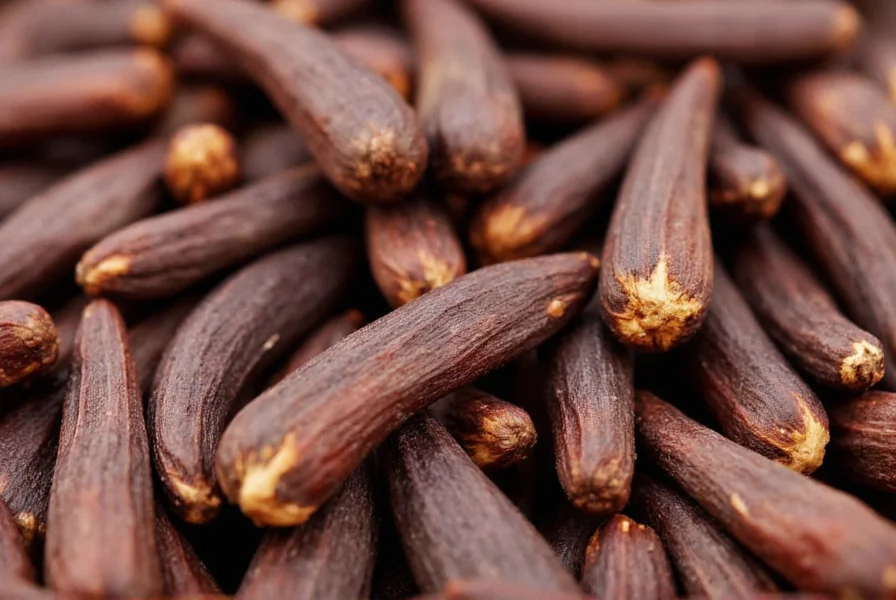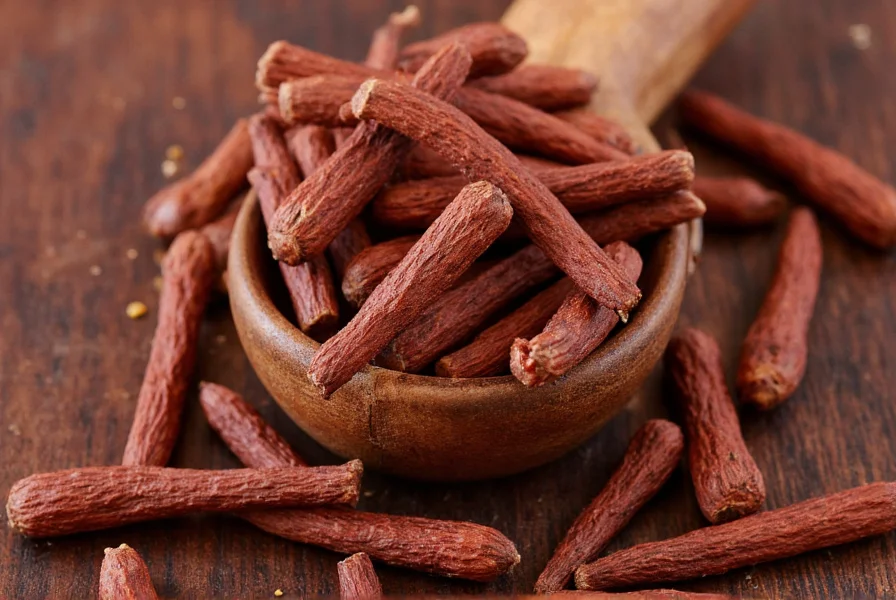When searching for clove pic references, understanding the visual characteristics of this popular spice is essential for proper identification in culinary and botanical contexts. Cloves (Syzygium aromaticum) are the unopened flower buds of an evergreen tree native to Indonesia's Maluku Islands, now cultivated across tropical regions worldwide.
Visual Characteristics of Whole Cloves
Whole cloves possess distinctive physical features that make them easily recognizable. The typical clove picture shows:
- Shape: Nail-like structure with a swollen flower bud head (4-6 mm diameter) and slender stem
- Size: Generally 15-20 mm in length, though size varies by growing region
- Color: Deep reddish-brown to dark brown when properly dried
- Surface: Visible oil glands creating a slightly bumpy texture
- Weight: Dense and heavy for their size due to high essential oil content
| Visual Characteristic | High-Quality Clove | Low-Quality Clove |
|---|---|---|
| Color | Uniform reddish-brown | Faded, uneven, or blackened |
| Surface Texture | Visible oil glands, slightly rough | Smooth, shiny, or oily appearance |
| Weight | Heavy for size (high oil content) | Lightweight (oil evaporated) |
| Aroma | Strong, spicy, sweet fragrance | Weak or musty scent |
Identifying Cloves in Different Forms
Understanding what cloves look like requires examining them in various states:

Whole Cloves
The most recognizable form shows the complete dried bud. When examining a clove spice picture, note the four projecting calyx lobes at the head that were once the flower petals. These create a distinctive cross shape when viewed from the top.
Ground Cloves
Properly ground cloves produce a fine, reddish-brown powder. Be cautious of products labeled as ground cloves that appear too dark or contain fillers. A genuine ground clove picture reveals a consistent reddish-brown hue without black specks or uneven coloring.
Visual Identification Tips for Quality Assessment
When evaluating cloves visually, consider these professional identification markers:
- Float test: High-quality cloves sink vertically in water due to density from essential oils
- Oil visibility: Look for tiny droplets of clove oil on the surface in humid conditions
- Consistency: Uniform size and color indicate proper harvesting and processing
- Stem attachment: Natural stem should be intact, not broken or artificially attached
Common Visual Misidentifications
Several spices resemble cloves visually but have different characteristics:
- Allspice berries: Rounder, smoother surface, uniform spherical shape
- Nutmeg: Larger, oval-shaped with different coloration
- Star anise: Distinct eight-pointed star shape, completely different appearance

Regional Variations in Clove Appearance
Cloves from different growing regions display subtle visual variations:
- Indonesian cloves: Typically larger with higher oil content, darker color
- Madagascar cloves: Slightly smaller, more uniform shape, medium brown
- Zanzibar cloves: Known for consistent size and rich reddish hue
These regional differences explain why clove images might show slight variations in appearance while maintaining the essential nail-like shape that defines this spice.
Practical Applications of Visual Identification
Knowing how to visually identify cloves serves several practical purposes:
- Culinary accuracy: Ensures proper spice selection for recipes requiring specific clove characteristics
- Purchasing decisions: Helps identify fresh, high-quality cloves versus stale or adulterated products
- Botanical studies: Supports accurate plant identification in agricultural contexts
- Historical research: Aids in analyzing historical spice trade documentation through visual references











 浙公网安备
33010002000092号
浙公网安备
33010002000092号 浙B2-20120091-4
浙B2-20120091-4